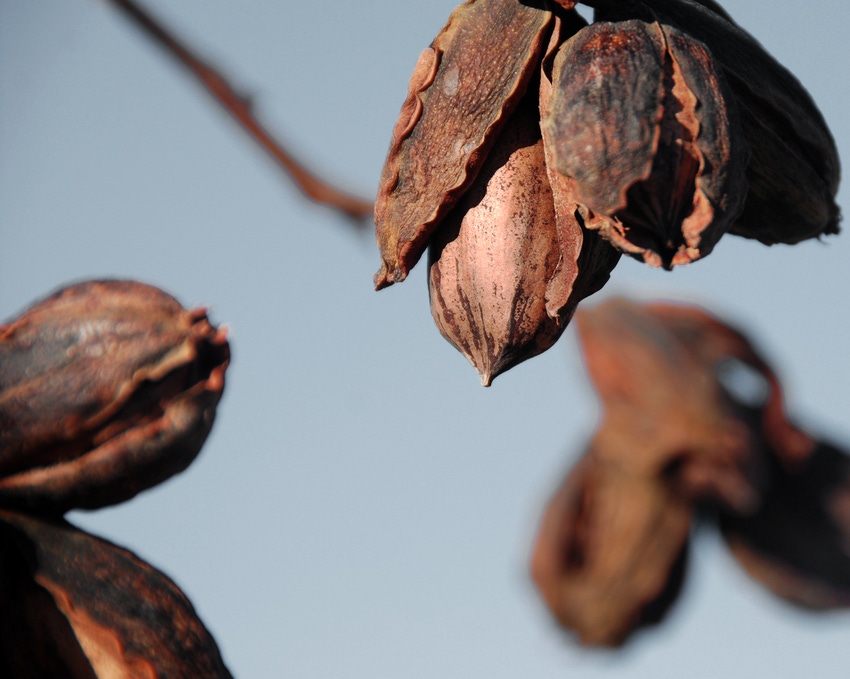
Georgia’s pecan industry is hoping Hurricane Michael diminishes significantly before it reaches a crop vulnerable to significant losses.
They can ill afford the damage, which will be the second year in a row the industry suffered devastating storm damage at harvesttime.
University of Georgia Extension agricultural economist Jeff Dorfman estimates pecan growers could lose $200 million to the storm.
UGA Extension pecan specialist Lenny Wells urges growers to take all possible precautions before and after the storm hits. “We hope things do not turn out as bad as they appear,” he wrote in blog post earlier today.
But he acknowledges that the “storm’s forecast takes a direct route through the heart of Georgia’s major pecan production region as a hurricane or strong tropical storm when it arrives.”
Consequently, Wells encourages producers to prepare for cleanup. “I spoke with Tas Smith, state director of FSA for Georgia regarding the steps growers need to take in preparation for potential Emergency Conservation Program (ECP) funds,” he wrote.
“Unfortunately, most growers became very familiar with this process last year following Irma. The normal protocol is for growers to start cleanup only after they have contacted their local FSA office and FSA staff has visited the orchard to document damage. Following last year’s storm, FSA developed procedures to expedite cleanup with the damage occurring so close to harvest.
“This year’s storm is even closer to harvest and is indeed in the middle of harvest for those with early varieties. Therefore, it is even more important for growers to get debris out of the way for nut harvest as soon as possible.”
He notes that “for growers to be eligible for ECP funds once they become available and be able to begin cleanup ASAP, they should immediately go to their FSA office to sign a waiver to start cleanup and Form 848.”
He recommends that growers take photos to document damage. “Once the waiver has been signed, growers should be able to remove debris and trees from the orchard but do not burn it until FSA officials have made their visits. Be sure to take photos of the middles between tree rows to show that the debris impedes harvest. Ask your FSA officials for further instructions.”
Wells encouraged producers to contact the Georgia Pecan Growers Association if they encounter trouble with the waiver process, “to make sure everyone is on the same page. Normally, counties become eligible for ECP funds after a disaster has been declared in that county. Congress must approve the funding before it becomes available.
“I pray everyone stays safe and our trees and crop make it through the storm OK."
About the Author(s)
You May Also Like






